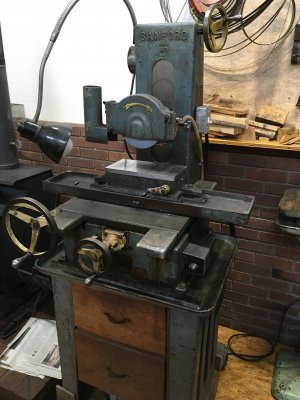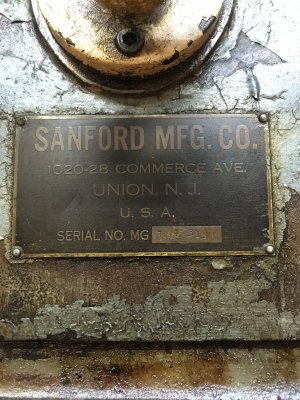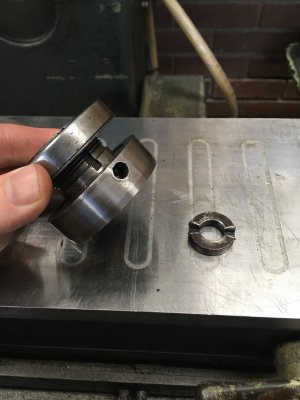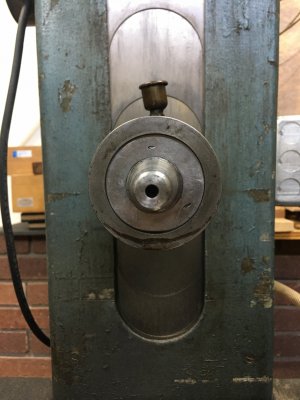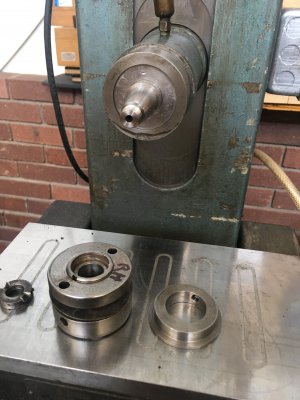- Joined
- Jan 17, 2020
- Messages
- 5
Recognizing this is an old thread, I wanted to add information about my Sanford MG grinder. It has been in the family for many decades - originally in NJ. The machine has a standard 3TPF spindle taper, 9/16-18 LH threads, and uses a slotted spindle nut (which I will replace shortly with a hex nut style from Sopko). The wheel adapter that came with it uses a right hand thread, which is incorrect for the rotation direction of the spindle. I am not sure if that was original to the machine or whether someone 'used what they had' at some point. The only modification I have done is to add a coolant pump, nozzle, and a gooseneck light. Despite looking somewhat worse for the wear, the machine is surprisingly accurate.
Serial number is 151-312M, suggesting it is from 1951. I do not know what the 'M' signifies.
I am unsure about the spindle bearings - once the wheel hub was removed and the 'dust cap' that is set screwed to the spindle was removed, I don’t see any evidence of bearings - just something that looks like Babbitt in the spindle housing. I am not yet sure if this is a 'cap' or whether this machine could have had plain bearings.
Anyone have experience with these machine spindles? Can I be sure that there are ball bearings in there somewhere?
Serial number is 151-312M, suggesting it is from 1951. I do not know what the 'M' signifies.
I am unsure about the spindle bearings - once the wheel hub was removed and the 'dust cap' that is set screwed to the spindle was removed, I don’t see any evidence of bearings - just something that looks like Babbitt in the spindle housing. I am not yet sure if this is a 'cap' or whether this machine could have had plain bearings.
Anyone have experience with these machine spindles? Can I be sure that there are ball bearings in there somewhere?

